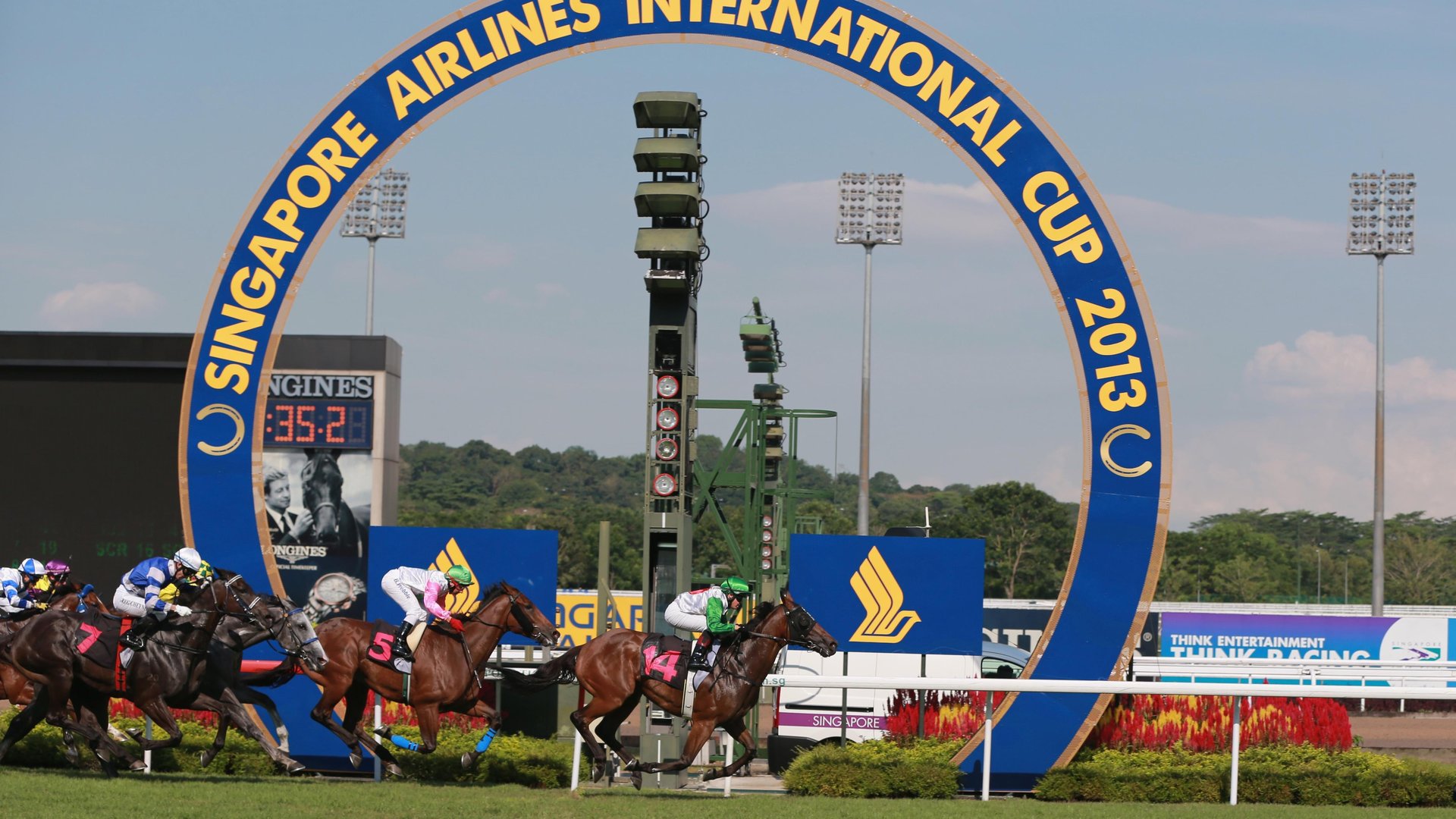Singapore will shut down its oldest and only racecourse to build more homes
To solve a housing crunch, the government will take 120 hectares of land from Singapore Turf Club in 2027

Amid a housing crunch, Singapore’s only racecourse is being cleared to make way for more homes.
Suggested Reading
Singapore Turf Club (STC), the oldest racecourse in the tiny city-state, is due to close by March 2027, after which the government will take charge of the land, in the area of Kranji, for redevelopment.
Related Content
“The Singapore Racecourse site will be used for housing, including public housing,” the ministry of finance said yesterday (June 5), adding that it is “also studying other potential uses including leisure and recreation.”
Horse races at the racecourse will continue until the 100th Grand Singapore Gold Cup on Oct. 5, 2024, STC said in a statement yesterday (June 5). After that, racehorse owners and trainers will be offered support for horse maintenance and export. STC employees will be given retrenchment packages depending on their position and tenure, in line with the ministry of manpower’s guidance.
Quotable: Tackling Singapore’s land scarcity problem
“We are saddened by the decision of the Government to close the Club. At the same time, we understand the land needs of Singapore, including housing and other potential uses such as leisure and recreation.”
—Niam Chiang Meng , chairman of the Singapore Turf Club
By the digits: Singapore Turf Club
120 hectares: The area of land held by the Singapore Turf Club, to be passed on to the government
180 years: The age of the Singapore Turf Club, founded in 1842. It is the oldest existing and only surviving racing club in the small Southeast Asian nation.
$500 million: The five-year construction cost for the club’s Kranji location, where it moved in 1999 and where it has stayed ever since
30,000: The STC’s capacity for spectators. In-person attendance at races has been dwindling.
6,000: The average attendance per race day in 2019, declining from 11,000 in 2010
2,600: The average attendance per race day after the post-covid reopening of the racecourse in 2022
2: The number of international races—the Singapore Airlines International Cup and the KrisFlyer International Sprint—that were discontinued in 2015
The Singapore government’s plans for the racecourse’s land
Over the past two centuries, Singapore has grown in size by 25% by reclaiming land from the sea, most of it since its independence from Britain in 1965. Still, the 710 square kilometer nation faces a chronic shortage of land.
In 2013, the ministry of national development, in its Land Use Plan, had noted a need to provide an additional 5,600 hectares of land by 2030 to accommodate its population’s growth from 5.7 million to between 6.5 and 6.9 million. Singapore’s population is currently on the brink of touching 6 million.
Singapore has acquired land from other clubs
The Jurong Country Club (JCC), with a lease meant to expire in 2035, was acquired by the government in May 2015, to be used as the site of the Singapore-Kuala Lumpur High Speed Rail terminus. The Raffles Country Club was also taken over in 2018. As a result, property prices in the immediate area went up. But the high-speed rail project ran into several headwinds, and was cancelled in 2021.
Property analysts have suggested using the leftover land parcels for more homes, community facilities, and even a retirement village.
Related stories
🏙️ How Singapore is a city built for a new generation of urbanites